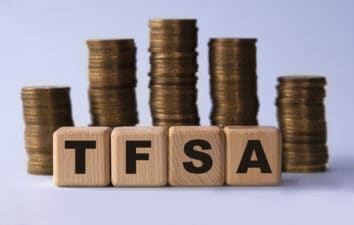Did you know that life expectancy in Canada has been increasing by 0.18% since 2017? For 2021, the current life expectancy is 82.66 years. If you’re 35 years old today, you could live past the “not-so-golden years.” The statistics should matter to Canada Pension Plan (CPP) users deciding when to start the pension payments.
When the pension starts, there’s no turning back. The worst-case scenario is returning to employment or work because of financial need. Thus, in choosing to start CPP payments, users must plan meticulously to determine the timing. The following are the mistakes to avoid before starting your CPP payments.
1. Unaware of the CPP’s limitations
The Canada Pension Plan Investment Board (CPPIB) has the mandate to manage the CPP fund on behalf of 20 million Canadians. Bear in mind, however, that the CPPIB’s purpose is to provide CPP contributors with the foundation on which they can build their financial security in retirement.
Since the CPP is only a foundation, each user is responsible for setting up other lifetime income sources in retirement. The CPP replaces only 25% of the average workers’ pre-retirement income. Younger users can expect a higher replacement level of 33% with the ongoing enhancements.
2. Decumulation of pension
The standard pensionable age in Canada is 65, although the CPP is available at age 60. If you plan to start payments when the pension becomes available, think this option through. The early option has serious financial consequences. Your CPP payments reduce by 7.2% per year before 65, or 36% overall in five years.
Instead of the average $8,270.04 annually (as of October 2020), your CPP becomes $5,292.83. You’re decumulating your pension with the early option. Assuming you’re in perfect health, consider delaying until 70. In this case, the CPP increases by 42% permanently.
3. Not prepared to simplify
Whether you take your CPP at 60, 65, or 70, mentally prepare to simplify your life. Create a realistic budget and get more efficient about your spending. Your retirement years might be longer than the working years. You don’t want to outlive your retirement savings.
Long-term hold
The usual sources of retirement income in Canada apart from the CPP are dividend stocks. You can use your savings to purchase income-producing assets like Canadian Imperial Bank of Commerce (TSX:CM)(NYSE:CM). Canada’s fifth-largest bank is a dividend heavyweight with an extensive dividend track record.
CIBC pays a juicy 4.89% dividend and trades at $124.49 per share today. Those with $200,000 worth of shares derive $9,380 in annual dividends, more than the average yearly CPP. If the investor keeps reinvesting the dividends, the investment would be compound to $500,888.13 in 20 years.
The 152-year dividend track record should give CPP users the confidence to invest in the $55.75 billion bank. CIBC’s total return in 20 years is 496.64% (9.33% CAGR). Current investors are up 14.51% year to date, and analysts see a potential 16% increase to $44 in the next 12 months. Buy the bank stock now and hold it for good.
Stand on solid ground
Retirement life is more demanding than you think. The surprises are plenty, if not harsh. If your financial resources are inadequate, you may not cope with the rising cost of living. Plan well, act, and don’t regret the decision you’ll make today.








